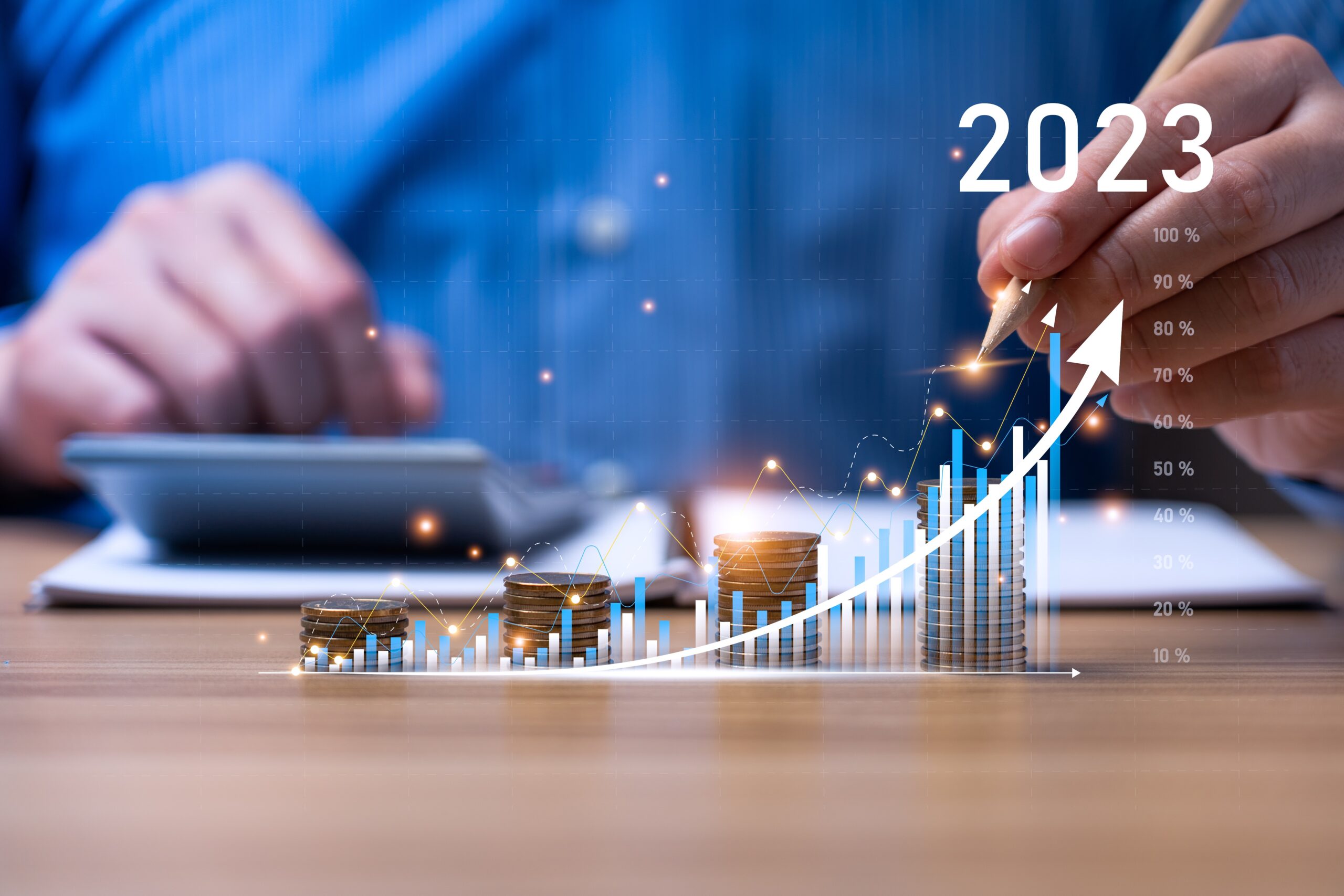6 Selling and Buying Trends to Watch in 2023
It’s crystal ball time as analysts, consultants, and others share B2B selling predictions and trends they’re advising us to be on the lookout for in the new year. After all, who isn’t looking for ways to better align our selling strategies with what’s to come?
Because we’re in the business of continuously monitoring the latest/greatest B2B marketing and sales practices, we feel it’s important to read it all and vet what we feel is relevant vs. hype so we’re better prepared to adapt the ‘best of the best’ practices for ourselves, and so we can appropriately advise our clients.
Of course, trends come and go. Those that stick have typically already been in play for a while – meaning they’ve been developed and refined over the past couple of years. To that end, the following trends we’ve identified as worth watching aren’t the latest shiny objects; instead, they’re trends that are proven AND actionable.
Key Takeaways:
- Plan now to change your selling model to adapt and align with how your buyers are buying, including their growing preference for a remote/hybrid buying experience.
- Sales leaders should prioritize investments that provide high value to buyers, as well as those that increase selling skills and productivity.
- Producing more revenue is the name of the game, and it starts with enabling broader, deeper customer engagement.
- Adapt to Ever-Changing Buyer-Seller Dynamics: B2B buying has evolved from an in-person, direct experience, to a digital, complex buying process with multiple stakeholders. It is more important than ever for marketing and sales strategies to be aligned and to operate from a unified customer data set.
- Buyers will continue to place more value on a consultative, collaborative, and efficient sales process, which is tougher as sales cycles lengthen and more people are involved.
B2B Buyers Want to Use a Mix of Traditional and New Purchasing Channels
The pandemic has driven a ‘remote-first’ hybrid sales engagement model that will continue. Why? Many buyers don’t want to be required to meet in person anymore. With that, a hybrid sales force and approach are necessary, and this requires a shift in order to align with how customers are deciding and buying these days. Customers want more channels, convenience, personalized experiences, and remote/self-service sales options. Hybrid sales encompasses all of this.
Remote selling/buying is expected to become the dominant way of doing business. In fact, remote/hybrid is most preferred by buyers during all purchasing stages. Additionally, it drives up to 50% more revenue by enabling broader, deeper customer engagement than more traditional models can produce. (Source: McKinsey & Company, “The Future of B2B Sales is Hybrid”).
This doesn’t mean a complete shift away from traditional inside sales approaches. Rather, it means incorporating them along with other selling/buying channels like telephone, email, website/e-comm, procurement portals, mobile apps, video conferencing, live chat, as well as in-person when necessary.
Related to this is the continuing evolution of traditional field and inside sales roles toward adapting the hybrid approach. Hybrid sellers have similar responsibilities to traditional field-based reps, but hybrid sellers use more digital approaches, including videoconferences, chats, and e-commerce to close deals. They spend about half their time engaging remotely, while field sellers spend a majority of time through in-person or phone-based customer engagement.
Don’t entirely remove in-person engagement from your selling channels mix. Instead, reserve it for specific customers and interactions that matter, such as:
- Those with complex needs
- Important opportunities like expensive purchase of a new solution
- When buyers have signaled preferences for face-to-face engagement
- To design bespoke offerings
Finally, know how – and how frequently – in-person interactions should occur, and align expectations accordingly with your sales team. For example, expect a balance of traditional (in-person), remote (phone, video conference, email, etc.), and self-service (e-commerce) interaction throughout the entire purchasing journey – but not necessarily in equal measure.
Double Down on Personalized Customer Experience
According to QuickSprout, 60% of customers are comfortable providing sellers their personal information in exchange for a more personalized experience. According to McKinsey, 76% of consumers said that receiving personalized communications was a key factor in prompting their consideration of a brand.
Encourage consumers down this path by letting them create profiles on your website. Another way to personalize their experience is to answer questions through a real-time sales team. On your website, encourage customers to call your sales team, or talk to them through live chat software solutions that are affordably staffed through use of experienced and well-trained outsourced agents as a supplement to or instead of using your own expensive internal resources.
Talking to a real person will help eliminate any doubts customers may have, and your sales reps and agents can help close the sale in the process.
Get Insightful About Your Buyers by Following Their Engagement Trail
Buyers provide plenty of useful data on digital channels. For example, before they accept meetings with you, they visit your website(s), read online peer reviews, and attend webinars. These ‘data trails’ can be leaned on to provide personalized engagement buyers require.
During your sales process, emails, phone calls, and chats can be recorded and integrated into your CRM, which creates a sizable, insightful, and useful data pool for buying activity analytics at the lead and opportunity level.
This data can help your sales team and outsourced agents to determine which buyers to prioritize and the most productive ways to spend their time. This can shape your GTM strategy, segmentation, engagement channels, and content.
When qualitative and manual inputs are combined with data from digital customer engagement, a robust and timely set of actionable insight emerges. For example, you may find that your sales reps or SDR roles requires redefining/specialization throughout the lead-to-opportunity conversion process to better serve potential customers. If so, then leverage this newly discovered opportunity to improve the overall process, including omnichannel sequences that include digital and human touches. Consider re-routing leads to and from different follow-up channels and/or developing a different lead-scoring system.
The result may be dramatic conversion rate improvements.
Optimize Tech by Knowing Where – and Where NOT – to Invest
Some sales organizations overcomplicate their IT-based sales process by allowing new bells and whistles to distract them from core needs.
High-performing sales groups use a variety of strategies to support adoption of new tech. You can do the same by addressing obvious critical pain points within your core process. Only you know what your biggest productivity barriers are, so be diligently introspective.
It’s worth noting that high-performing sales orgs also evaluate where they SHOULDN’T make tech investments and where they SHOULD optimize existing systems. You may find you can benefit more from optimization of current platforms. Examples include reconfiguring dashboards, restructuring enablement portals, and enhancing integrations between your existing systems.
Improve Sales Capabilities and Productivity
A trend successfully playing out with top selling orgs is implementation of holistic learning journeys. They’re broadening the scope of teachable topics, including remote-specific selling skills such as video-based sales conversations, virtual negotiations, CRM utilization, and training on product-recommendation tools.
Another effective strategy to improve the odds for sales productivity and success is frequent and useful feedback from Front-Line Sales Managers (FLSM) to their sales team. According to Forbes, 61% of reps report that coaching and input from their FLSM is effective and improves performance. However, only half of the sales execs surveyed have emphasized the need for their FLSM’s to be skilled coaches. These two trends are incompatible, so investing in upskilling these capabilities is an opportunity!
Be More Consultative, Confident and Engaging with Buyers
Buyers will continue to value confident, consultative, and efficient sellers. Buyers conduct research and, in return, want to engage with sales reps who are efficient, communicate effectively, respond quickly to questions, share data, and guide buyers through the purchasing process. This trend isn’t going away.
In addition, sellers must plan to engage more buyer stakeholders. The days of single-threaded sales interactions are long gone as more functions are entrenched in the buying process. The most important additional players in vendor evaluations are CFO’s and other finance team members. Related to this, the average buying cycle duration has increased as more people are involved in the process, which leads to more complexity and thus more deal-closing touch points.
It’s also important to be mindful that buyers don’t want to engage with sales immediately. According to Forrester, in a buyer’s optimal buying experience they would not engage with a sales rep until the Explore or Buy phase, and they prefer self-guided research in the Discover phase as opposed to interacting directly with a seller. However, 69% of respondents indicated that the ideal buying experience would be a seller reaching out to them to schedule meetings, which highlights the importance of proactive seller engagement to be top of mind so when buyers are ready.
Contact us to learn more about how we can help you lean into the selling and buying trends that are here to stay.


